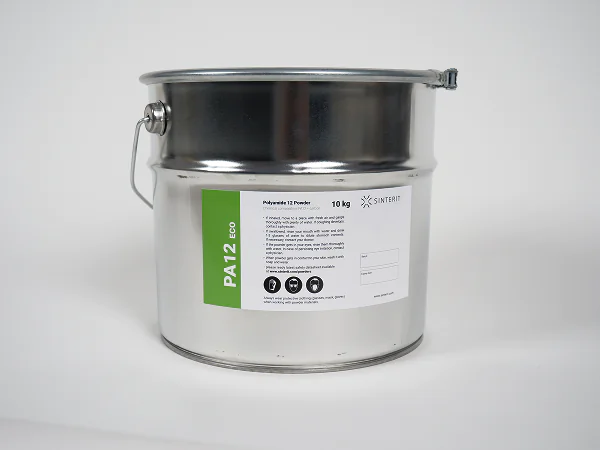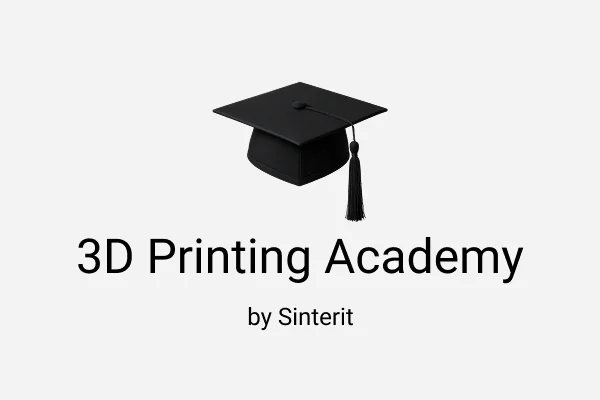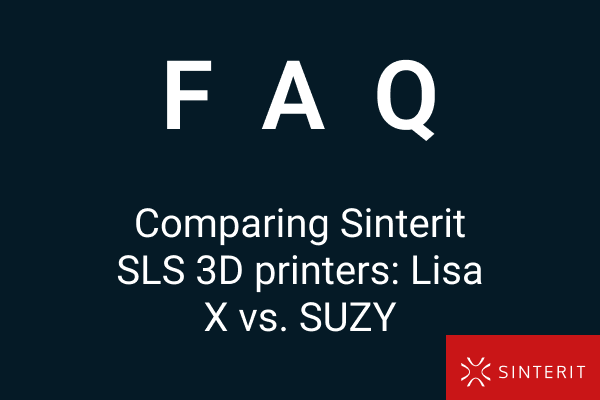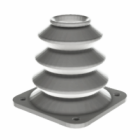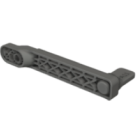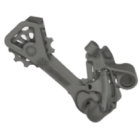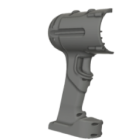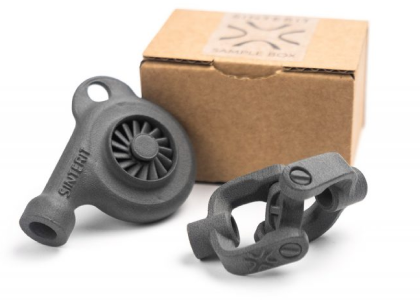How open SLS supports 3D research and experimental development
Over the past few years, when contacting representatives of different sectors interested in introducing SLS to their facility, I experienced more and more enquiries from research labs across multiple disciplines – from biomedical engineering to advanced materials science. In previous article, we took a close look at closed-system SLS printers in research. I wanted to justify that ‘closed’ can be a mischievous word, especially when being associated with ‘limited to one job’.
I this article, however, I’d like to take a closer look at the open SLS system instead. Researchers often need greater control over printing parameters, access to a wider range of materials, and the ability to fine-tune processes in ways that closed systems simply don’t allow.
Open-environment SLS printers are systems that give researchers more room to experiment with parameters, materials, and workflows, eg, developing custom polymer blends, pushing the limits of mechanical properties, or simply needing rapid, reliable prototyping. In open systems, each of these tasks benefits from the ability to fine-tune parameters and directly influence material performance.
Why SLS matters in 3D research
Selective Laser Sintering has become an indispensable tool in research environments nowadays, offering a combination of specific features – precision, strength, and design freedom. Unlike other 3D printing methods, SLS doesn’t require support structures, allowing researchers to prototype complex geometries and functional parts with minimal post-processing, which namely the removal of powder excess. The process is relatively quick and allows for running several interactions in a short period of time.
Open vs closed SLS systems in 3D research
While closed-system SLS printers offer stability and ease of use, I cannot deny that they often limit access to print parameters and material experimentation. For researchers and their specific projects, it may be a significant drawback. Open systems provide the flexibility to adjust variables like temperature profiles and laser power, essential for those developing custom materials or testing innovative design solutions. Working outside a manufacturer’s ecosystem gives you the freedom to dig deeper and often leads to discoveries you wouldn’t make otherwise and shortens the development cycle.
How does Sinterit Lisa X support experimental 3D research?
Among open-environment SLS printers, the Lisa X stands out as a research-friendly option. It strikes a balance between industrial-grade performance and lab-scale accessibility. With a build volume large enough for functional prototypes and the ability to work with a wide range of materials – including custom powders – the Lisa X it’s just perfect fit for experimentation. And in this particular case, I can surely say that the openness is a part of philosophy that stands behind the creation of Lisa X, not just an extra feature. It empowers users at multiple levels:
- First, it offers full access to printing parameters. Globally, the Lisa X allows for adjusting temperature in different areas of the printer, heating and cooling rates, layer thickness, and nitrogen usage. Additionally, on a per-model basis, we can modify laser power in different parts of the model and change sintering strategies. This allows researchers to fine-tune the process to suit experimental needs. This flexibility is crucial, eg. for developing new materials or optimizing print quality.
- Second, the Lisa X supports a broad range of materials, including standard powders and custom or experimental blends, without restricting users to proprietary supplies. This kind of freedom lets you get creative, test out new blends, and really explore what’s possible in material development.
- Lastly, its printer construction is designed with modularity and accessibility in mind, enabling easy maintenance and upgrades.
Together, these features make the Lisa X a fully customizable platform built to support the evolving demands of research and development.
Parameter control in open SLS 3D research
When talking to labs or universities when bringing the open SLS platform for a specific project is a must-have, I often get questions about the adjustability of parameters.
In the context of Lisa X and open SLS printing, global parameters refer to settings that apply to the entire print job or build process. These parameters set the overall operational conditions, such as the type of material being used or temperatures throughout the build chamber. Essentially, global parameters define the broad framework within which the entire print operates and ensure consistency across all printed layers.
On the other hand, local parameters control more specific, detailed aspects of the printing process that can vary within different regions of the printed object. These include settings related to laser energy distribution, such as how much power is used for the part’s infill versus its perimeters, the spacing and thickness of individual layers or shells, and features like perimeter repeats or offsets. Local parameters allow for fine-tuning of mechanical properties (depending on the material) and surface qualities on a micro level, enabling optimization of strength, flexibility, or detail exactly where needed within a single print.
Together, global parameters set the stage for the overall print environment, while local parameters provide the nuanced control necessary to customize and perfect each part down to its smallest details.
Pros and challenges of open SLS for research applications
If you’re thinking about using an open SLS system for research, it’s good to keep in mind some aspects. They give you a lot more freedom and room to customize than closed systems, but they also take a bit more know-how and hands-on work to get the most out of them. I did not categorize them, but decided to point them – I believe that some of them, even sounding as a drawback, do not matter for those who really need an open system.
- Flexibility and control: open SLS printers give you full access to critical printing parameters such as laser power, scanning speed, and temperature profiles. This level of control allows for precise adjustments that can optimize print quality and enable experimentation with novel materials or complex geometries.
- Material versatility: open SLS systems support a broad range of materials – including standard, custom, and experimental powders – ensuring the freedom to develop and test innovative formulations tailored to their projects.
- Hardware customization: many open systems feature modular construction, making it easier to perform maintenance. This adaptability allows labs even to tailor the machine itself to evolving research needs, but usually at their own responsibility.
- Innovation-friendly: by removing restrictions on parameters and materials, open SLS systems encourage creative problem-solving and iterative testing, which can accelerate the pace of discovery and lead to breakthroughs in additive manufacturing and material science.
- Effort on engaging with the process for optimal results: fine-tuning parameters to achieve consistent results can involve some trial and error, particularly in the early stages of a project. While this may be seen as a drawback, it’s a natural part of the process. Developing custom print profiles for your specific materials does take time
- Lack of official material support: while open systems allow you to use third-party or custom powders, this freedom can also be a limitation, because you don’t get the same level of pre-validated material settings, documentation, or guarantees you would with vendor-approved materials.
- Advanced control when you need it: open SLS systems give you access to detailed mechanical and material settings -ideal for users who want to fine-tune their results or experiment with custom profiles. If you don’t need that level of control, the system can still operate effectively with default or pre-set parameters.
- Flexible learning curve: while open systems offer deeper manual control compared to closed, automated setups, you only need to engage with those advanced features if your application calls for it. For standard use cases, you can rely on existing material profiles and workflows without needing an extensive technical background.
Summary: is open SLS the right fit for your 3D research?
Now that you understand what an open SLS system offers, you know that an open-environment SLS system isn’t an absolute necessity in research, especially in the design research field (check our article Pre-configured platforms for SLS 3D printing in research). However, it can be highly beneficial for certain research applications, particularly in material development. An open environment allows for greater flexibility in testing new materials, custom parameters, and experimental processes, making it a valuable tool for specialized research where traditional closed systems may be limiting. While not essential for all users, it provides critical advantages for scientists and engineers advancing the next generation of materials and manufacturing.
FAQ: open SLS and 3D research
An open SLS (Selective Laser Sintering) 3D printer allows full access to printing parameters such as laser power, temperature profiles, and sintering strategies. Unlike closed systems, which restrict material choices and tuning options, open systems are ideal for research environments that require experimentation with materials and custom process development.
Global parameters affect the entire print job — such as chamber temperature or material type. Local parameters allow for fine-tuning within specific regions of the print, like modifying laser power for infill vs. perimeters. This dual-level control is essential for optimizing functional properties of parts.
Open SLS printers provide full access to printing parameters and material freedom, allowing researchers to fine-tune settings and work with experimental powders — ideal for material development and process optimization.
Yes. Universities and R&D labs use open SLS for research in materials science, biomedical applications, and mechanical engineering thanks to its flexibility and precise control.
Yes. Lisa X offers access to both global and local print parameters, a modular design, and compatibility with custom powders, making it a research-ready platform for open SLS.
The Sinterit Lisa X offers full parameter control, supports both standard and custom powders, and features modular hardware for easier maintenance. It enables local parameter adjustments, allowing fine control over laser energy distribution and material behavior — key for scientific exploration and material testing.
A concern is that modifying the system or using non-approved materials can void the manufacturer’s warranty, leaving the lab responsible for repair costs if something breaks.
Yes. Open SLS systems are specifically suited for developing and testing custom or experimental polymer powders — a core aspect of advanced 3D research.
 Austria
Austria  Bosnia and Herzegovina
Bosnia and Herzegovina  Bulgaria
Bulgaria  Croatia
Croatia  Czech Republic
Czech Republic  Denmark
Denmark  Estonia
Estonia  Finland
Finland  France
France  Germany
Germany  Greece
Greece  Hungary
Hungary  Ireland
Ireland  Italy
Italy  Latvia
Latvia  Lithuania
Lithuania  Poland
Poland  Portugal
Portugal  Romania
Romania  Slovakia
Slovakia  Slovenia
Slovenia  Spain
Spain  Sweden
Sweden  Switzerland
Switzerland  United Kingdom
United Kingdom  Ukraine
Ukraine  China
China  Hong Kong
Hong Kong  India
India  Israel
Israel  Japan
Japan  Malaysia
Malaysia  Philippines
Philippines  Saudi Arabia
Saudi Arabia  South Korea
South Korea  Taiwan
Taiwan  Thailand
Thailand  Turkey
Turkey  United Arab Emirates
United Arab Emirates  Egypt
Egypt  South Africa
South Africa  Tunisia
Tunisia  Canada
Canada  Mexico
Mexico  United States
United States  Brasil
Brasil  Colombia
Colombia  Australia
Australia  New Zealand
New Zealand 
